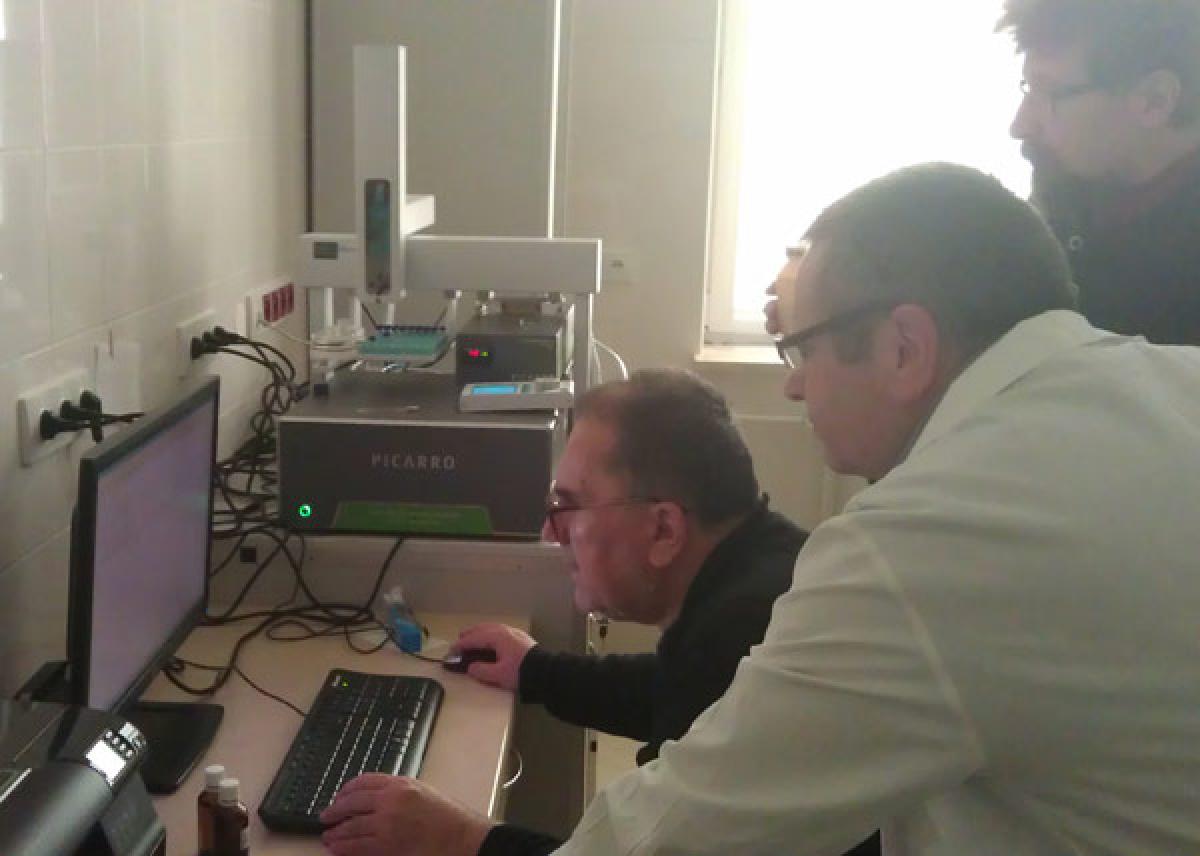Housed in the first floor of the physics building of the Maria Curie-Skłodowska University in Lublin, Poland (UMCS-Lublin) is a lab that is responsible for some very impressive technical innovations to enable isotope analysis of a variety of light and heavy elements over the years. It’s all the more impressive when you see most of the equipment used to make some very challenging, difficult isotopic measurements are made from combinations of Cold War-era American and Soviet parts, such as one beast for chlorine analysis that provides unprecedented sensitivity. Professor Stanislaw Halas, the master of this hotbed of development, has been at the forefront of mass spectrometry-based isotope innovation for decades, dating back to his time in the lab of one of the godfathers of stable isotope analysis, Sam Epstein, at Cal Tech.
So when a major European Grant with funds to improve and expand the infrastructure for Poland’s research institutes came about, UMCS was the natural choice to lead the charge. Not far from the main campus of UMCS, the new building went up with a focus on water analysis; water quality, hydrology, agriculture and ecology are all primary axes of the facility, and the person best suited to the task of analysis is Professor Halas. Of course stable isotope analysis, the cornerstone of Professor Halas’ life work, would play a pivotal role in helping to determine the source and fate of pollutants, nutrients and entire bodies of water. However, as ground-breaking and innovative as the technologies born in the first floor of the chemistry building on the UMCS main campus may be, the processes are very long, tedious and difficult to carry out. It takes not just dedication, but also great skill and years of practice to obtain the world-class quality data that this group is used to producing. And looking at the sheer volume of samples that would be coming in, the research group realized they had to find a more efficient route for some analyses, especially the isotope ratios that are measured in water - deuterium /hydrogen and oxygen-18/oxygen-16.
For the most precise measurements with mass spectrometry techniques, one may have to spend days preparing each sample, playing between extreme cold and extreme hot over a glass-enclosed vacuum line to purify and convert the water molecule to two pure gases (hydrogen and carbon monoxide – IRMS cannot measure pure oxygen). The gases must then be analyzed individually, which will probably take another day. Also the IRMS foot print is quite large, it consumes a large amount of electrical power, and requires the ever more expensive helium to operate. Then along came a new, simpler technology called cavity ring-down spectroscopy (CRDS), and the latest development in water isotope analysis, the L2130i. Measuring the isotopes in water directly simplifies sample prep (no more slaving over vacuum lines), it only uses 250 watts of power (plugs into any wall), and needs to air work (much less expensive than helium). On the face, it seems like the more intelligent choice for isotope analysis. But the question any key scientist who has spent their careers building instrumentation will ask: is it as good as what I’ve been doing for 30 years?
After an overnight run, Professor Halas and his group came to the conclusion that Picarro’s cavity ring-down spectroscopy gave the best water isotope data they had ever seen. Combined with the simplicity and relative lightning speed compared to traditional techniques, cavity ring-down spectroscopy is the definite successor to isotope ratio mass spectrometry. More so, it is obvious that Picarro is the only choice for world-class water isotope measurements. Measurements which the UMCS will employ to quantify how much groundwater is utilized by local farmers; how much runoff from the city enters the nearby watershed; to confirm the mode of transport of pesticides into the environment.
